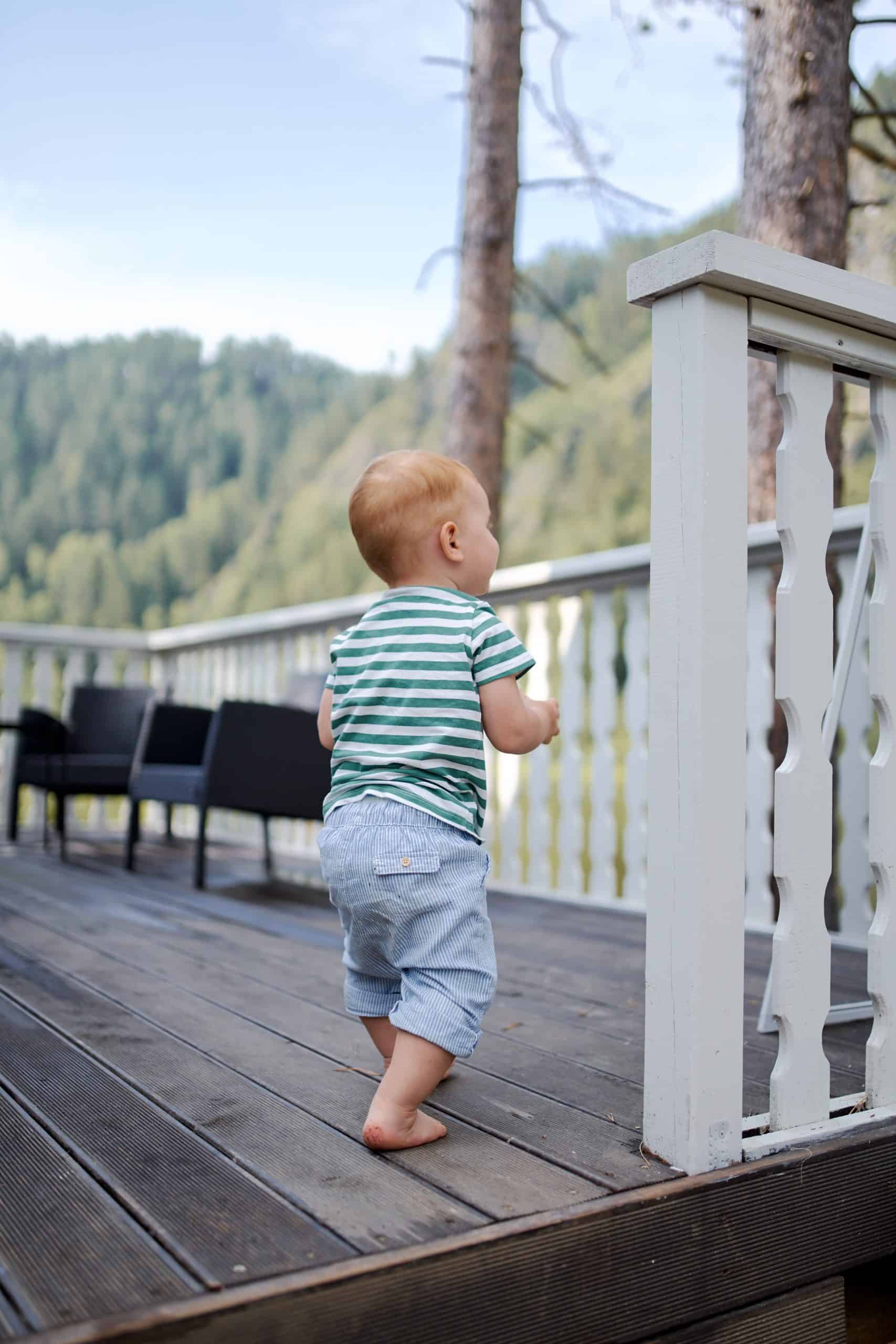Baby gates are wonderful things. They keep your baby safe and give you confidence to let them grow and explore their environment on their own. Without them, you might be left with either a lease, or unending panic as you hover and monitor your child’s every move. Both those options are no good for you or your child. Eventually you both must say goodbye to the gate. When is the right time though?
The appropriate time to install and eventually remove a baby gate depends on your baby. You know your baby best and should be on the lookout for the signs your child no longer needs the gate.
When should baby gates be installed?
Once your child is mobile, you need those gates up. Mobile doesn’t mean simply crawling or walking…it means whenever your child is able to move themselves from one spot to another by any means.
If there are any spaces they could reach which might be dangerous, then you need some gates. These areas include:
- Staircases
- Ledges
- Sources of heat (fireplaces, furnaces, candles, ovens, etc)
- Breakable objects
- Sharp surfaces (end tables, decorative objects, woodworking shops, etc). As your child starts walking, they will be unsteady and will fall often. So keep them out of areas where falling can cause serious harm.
- Areas where pets relax and get time to unwind. Small children can cause pets a lot of stress, and it’s important to give your pets a place where they can get away and have some time to themselves.
- Areas with plants, chemicals, or anything which might be dangerous)
- Objects which are not anchored and could be knocked over (pillars, bookcases, lamps)
Children typically reach some level of mobility by the time they are six to eleven months. There’s a pretty big range since all children grow and develop at their own rate. So as you are teaching, playing, and celebrating their developmental milestones, keep track of their abilities and listen to your internal alarms concerning the dangers they are now open to.
Even before your child is mobile, you should either have a plan to quickly get gates or already have them installed. Take a careful look at the spaces your child will play in and identify the risky zones. If you are unable to redesign those risky spots to be safer, you should secure them with a gate. Once they start moving, their excitement and confidence will grow and they will start moving quickly. After they are moving, you won’t have much time. No one enjoys a late night run to the home improvement store to buy whatever gates they have on hand, and then trying to make the gate work where you need it. Trust me. It doesn’t end well.
When installing gates, make sure that you choose a gate that is best suited for that area. Pressure mounted gates are great in doorways or lower risk areas, but dangerous for stairs. Repeated attacks from a child could cause the gate to loosen and fall, allowing your child to fall with it all the way down the stairs.
When should baby gates be removed?
While your kid is learning and growing, they have nothing but time. They will continue to examine and test your defenses. Sooner or later they will find or create a weakness in one or more of your gates. Therefore, while gates can give you confidence and some real protection for and from your children, be careful about having a false sense of security.
There are several situations when you should remove a baby gate when your child
- Is close to being able to climb over the gate
- Can open the gate on their own, and installing a more difficult gate isn’t an option
- Can push the gate down or move it out of their way
- Finds or creates damage to the gate that you feel might weaken it
- Is able to identify the danger the gate is protecting them from and is able to avoid or handle the danger on their own
Long before you remove the gates, you should also be safely preparing your child for the gate’s removal. If the gate is guarding some stairs, you should be teaching your child to climb stairs on their own. If the gate is protecting the fireplace, you should carefully introduce the fireplace to your child and teach them why it is unsafe and that they should avoid it themselves. All the training in the world won’t prevent all accidents, but it will go a long way.
What to do after removing baby gates?
Once the baby gate is gone, both you and your child will immediately have some stress and uncertainty. This is a new situation for you both. Your child will be nervous, but maybe also excited, about their newfound freedom, and you’ll be slightly terrified of their newfound freedom.
The important thing is to carefully monitor them for a while to make sure they are behaving in a safe manner. You want to watch them, instruct them when they are doing something wrong, and help build their confidence. Don’t show them how panicked you are…that will only cause them to panic and be stressed as well. Then they won’t be confident and might end up making a painful or expensive mistake.
You might also want to find ways to make the space more safe. If the gate was guarding a staircase, perhaps you could install a handrail lower on the wall that is easier for small hands to grab. Think about the specific danger a space presents, the current abilities of your child, and find ways to adapt the area to your child.
Can you use the baby gates again?
Absolutely…and maybe. When you remove a baby gate, and are interested in reusing it for a later child or giving it to another parent, you should first inspect it.
If the gate has any damage or extensive wear, it should be discarded and never used again. Because of that damage, it is less likely to withstand the assault of another child and could fail when that child needs it most.
However if the gate is still in good working order without defects, then it should be good to use again, provided you continue to keep an eye on it like I mentioned earlier. As soon as you see any damage or wear, you should replace the gate with a new one.

